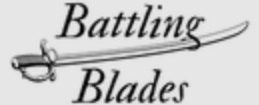Swords, those iconic symbols of strength and honor, have a rich history filled with diverse designs and purposes. When it comes to choosing the ideal sword, one must consider the specific scenario at hand. These remarkable weapons have evolved over time, from curved and sickle-like blades to massive two-handed sweepers, and have even reverted to thin and lightweight single-edged sabers. This evolution serves as a testament to the versatility and adaptability of these incredible weapons.
In this article, we delve into 5 unique historical fighting scenarios, offering guidance on the best-suited swords for each situation. Additionally, we explore the age-old debate surrounding the existence of a single “best” sword.
Is There a Best Sword?
To put it simply, there is no definitive “best” sword in history. If such a sword had existed, why would we witness the continuous evolution and improvement of swords across various cultures and time periods?
Just as a sports car isn’t suited for navigating thick mud or a truck hauling a heavy load wouldn’t fare well on twisty mountain roads, it’s unreasonable to expect a single sword to excel in all scenarios. Each sword is meticulously designed with a specific purpose in mind, some being better suited to particular situations while others shine elsewhere.
1. Best for Slashing – Katana
The Japanese Katana, with its stable design, flexibility, and precision, is renowned for its slashing capabilities. While other curved swords, such as the Messer, Cutlass, or Chinese Liuyedao, are also adept at slashing, the Katana’s precision in delivering strikes sets it apart. Its large handle, small pommel, handguard, and forward center of gravity make it the ultimate choice for slashing attacks.
2. Best for Thrusting – Gladius
When it comes to thrusting, the Roman Gladius sword takes center stage. Its double-edged straight blade tapers gradually from the guard to the tip, making it perfect for piercing targets. This design excels in penetrating armor, gaps in armor, or even flesh and bones. Other excellent thrusting swords include the Jian, Arming Sword, and larger Longsword.
3. Best for Cutting – Chinese Dadao
Cutting strikes requires a different approach, focusing on slicing through the target. The Chinese Dadao, with its broad and sturdy blade and forward center of gravity, is the ultimate cutting sword. Its design allows it to deliver powerful and precise cutting strikes. Other two-handed swords suitable for cutting include the Dacian Falx, Rhomphaia, Scottish Claymore, and Turkish Kilij.
4. Best for Infantry Combat – Arming Sword
In line formations with numerous armored infantrymen, short swords ranging from 24 to 31 inches (60 to 80 cm) excel. These swords are easily maneuvered in tight melee formations without posing a risk to friendly units. While the Gladius is often seen as the standard, the Arming Sword offers several advantages, including a non-intrusive crossguard, a long tapering blade, and a versatile pommel for bashing. It can be effectively used with or without a shield.
5. Best for Cavalry – Scimitar
Cavalry swords typically feature single-edged curved blades. The combination of curved blades and the speed of a mounted horse allows for devastating slashing attacks. The curved, one-handed Scimitars and Chinese Dao swords are among the best cavalry swords available. Their design enables them to cause significant wounds, even through armor gaps, while also offering handguard protection and minimizing the chances of becoming embedded in the target.
Conclusion:
In conclusion, selecting the perfect sword involves understanding the intended scenario and the sword’s specific design and capabilities. While there may be no single “best” sword that excels in every situation, the rich diversity of swords throughout history provides a remarkable testament to human ingenuity and the adaptability of these timeless weapons.

